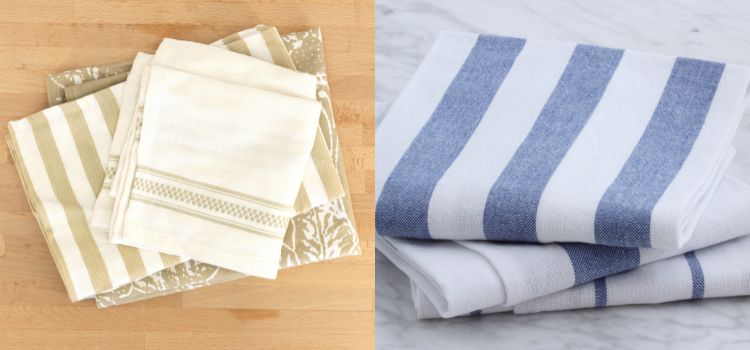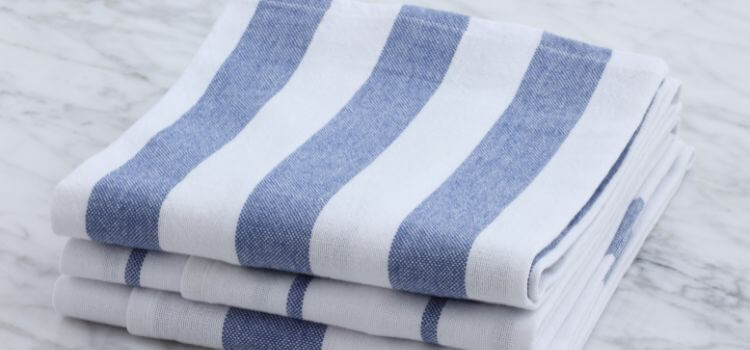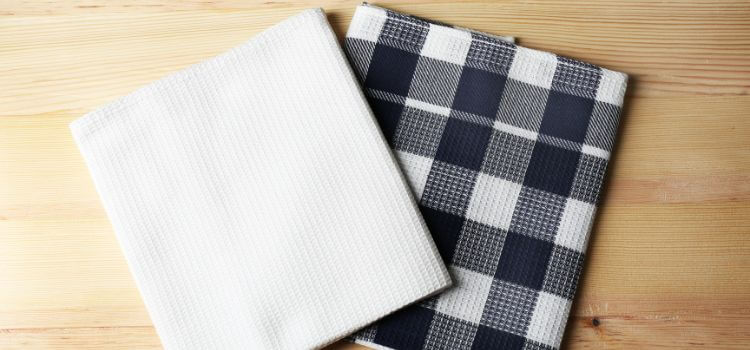As an Amazon Associate, I earn from qualifying purchases

This article explores the distinctions between tea towels and dish towels, examining their functions, materials, and practical applications in detail. Whether you’re a seasoned chef or a kitchen novice, understanding the nuances of these essential kitchen linens is key to elevating your culinary experience. Join us in exploring the timeless inquiry: Tea Towel versus Dish Towel.
Definition and Functionality
To begin, let’s define what exactly tea towels and dish towels are. Tea towels, also known as kitchen or flour sack towels, are woven cotton cloths that are typically absorbent and lint-free. They come in various patterns and designs, often featuring cheerful prints or witty slogans.
Conversely, dish towels are crafted from a variety of materials, including cotton, linen, and microfiber. They are generally thicker and more absorbent than tea towels, making them ideal for cleaning up spills and drying dishes.
Primary functions of each type of towel
While both tea towels and dish towels can be used for a variety of tasks in the kitchen, they each have their primary functions. Tea towels are best suited for light-duty tasks such as drying delicate dishes, wiping countertops, and covering rising dough. Their lint-free qualities make them ideal for polishing glassware and silverware without leaving behind any fuzz or residue.
On the other hand, dish towels excel in heavy-duty tasks such as cleaning up spills, drying large pots and pans, and scrubbing stubborn stains. Their thicker and more absorbent material makes them more durable for tackling tough kitchen messes.
Material and Design

The most common material used in both tea towels and dish towels is cotton. Cotton’s versatility and superior absorbency make it an ideal option for kitchen linens. Nonetheless, significant distinctions exist between the varieties of cotton utilized in each towel.
Tea towels are often made from lightweight, finely woven cotton such as muslin or flour sack cloth. This makes them thin and flexible, making them ideal for delicate tasks. On the other hand, dish towels are usually made from a heavier cotton weave or a blend of cotton and other materials like linen or microfiber. This gives them added durability for tougher tasks in the kitchen.
Designs and Patterns
Another key difference between tea towels and dish towels is their designs and patterns. Tea towels are often known for their whimsical prints and colorful designs, making them a popular choice for adding a touch of personality to the kitchen. These designs vary from retro floral motifs to contemporary geometric shapes.
On the other hand, dish towels tend to have simpler designs or no pattern. This is because their primary function is for heavy-duty use, so many dish towels are solid in color to prevent any potential staining or discoloration from cleaning up spills.
Absorbency and Durability

When it comes to absorbency, dish towels are the clear winner. Due to their thicker material and tight weave, they have a higher absorption rate than tea towels. This makes them ideal for tasks that require more liquid absorption, such as drying dishes or wiping up spills.
However, tea towels still have their level of absorbency, which makes them useful in the kitchen. They are perfect for tasks that require less liquid, such as drying off produce or wiping down a damp surface.
Durability of each type of towel
In terms of durability, dish towels have the upper hand. Their thicker material and tighter weave make them more resistant to wear and tear, making them suitable for regular use in the kitchen. They can withstand repeated washings and still maintain their absorbency and structure.
Tea towels, although not as durable as dish towels, can still last a long time with proper care. They may need to be replaced more frequently due to their thinner material and softer weave, but they are still a reliable option for light-duty tasks in the kitchen.
Maintenance and Care

For the longevity of your tea towels and dish towels, proper care and maintenance are crucial. Both towels should be washed regularly with warm water and mild detergent. Refrain from applying bleach or fabric softeners, as these substances can harm the towel’s fibers.
It is also recommended that both towels be air dry rather than tumble dry. This will help preserve their absorbency and prevent shrinkage. Additionally, tea towels should be ironed while still slightly damp to achieve a crisp, lint-free finish.
Preserving the quality
To prevent any cross-contamination, it is best to use separate dish towels and tea towels for different tasks in the kitchen. For example, have one set of dish towels for cleaning up spills and another for drying dishes or wiping down surfaces.
It’s also a good idea to replace your dish towels more frequently than your tea towels, as they are exposed to heavy-duty use. Keeping a few extra sets of both towels on hand is also beneficial for quick replacements.
Conclusion
In summary, although tea towels and dish towels might appear similar upon initial observation, they possess distinct characteristics and serve different functions within the kitchen. Tea towels are best for light-duty tasks and have a variety of designs to choose from, while dish towels excel in heavy-duty tasks and boast greater absorbency and durability.
Proper maintenance and care can help prolong the life of both towels, making them essential and versatile tools in any kitchen. So whether it’s wiping down counters or drying dishes, having a good supply of tea towels and dish towels can make all the difference in keeping your kitchen clean and functional.
So, next time you’re shopping for kitchen linens, consider the differences between tea and dish towels to find the perfect fit for your kitchen needs. Happy cleaning!
As an Amazon Associate, I earn from qualifying purchases